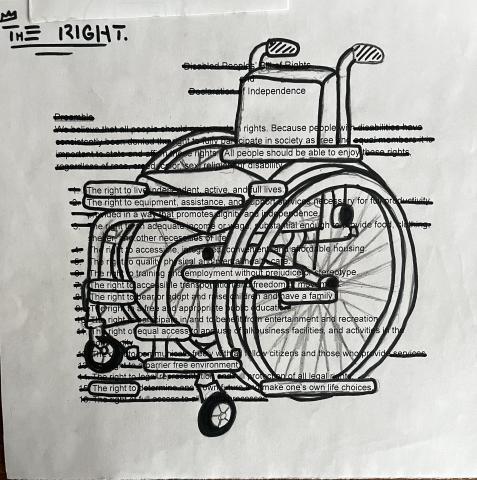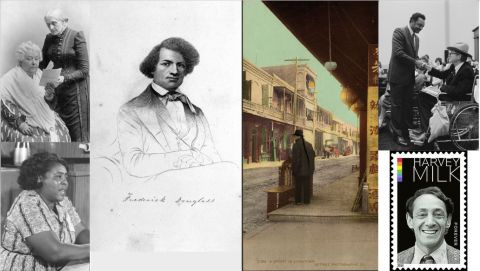Teaching About the Disabled People’s Bill of Rights and Declaration of Independence
By CherylAnne Amendola
"Whose Independence?" 5th grade lesson features reflections of the U.S. Declaration, including the 1989 Disabled People's Bill of Rights & Declaration of Independence - Cheryl Anne Amendola - National Middle Level Social Studies Teacher of the Year 2023. Link to slides from the lesson plan.
The more I read and learned, the more I knew that my students needed to read and learn about disability rights too, and in the unit where we discuss “all men are created equal” was the perfect place for it.
Primary sources are the receipts of history. There is no better way to understand and empathize with the people of the past than by looking at their pictures, reading their words, or hearing them speak. As a history teacher, I lean on primary sources to teach my students to evaluate the past using what the people of the time have left behind; it empowers students to draw their own conclusions rather than being given someone else’s interpretation in a textbook.
Primary sources are the single most important tool in my classroom for teaching students how to think critically and get as close as possible to the thoughts, feelings, and lived experiences of the people they are studying. History is about people, after all.
When I began teaching about the Declaration of Independence, the paradox of Jefferson’s words, “all men are created equal” and his actual lived experience was something I wanted to make sure my students knew about and studied. From there, my ideas about this unit grew, because as many know, the philosophy of American independence is one that inspires people around the world, but is not put into practice for many groups of people in our nation.
To help students see this and empathize with others, I used primary sources. I began having students compare the words and philosophy of the Declaration with words inspired by other groups who were not equal in our country in practice, such as the Declaration of Sentiments, in which women demand the right to vote, and What to the Slave is the Fourth of July, where Frederic Douglass criticizes the hypocrisy of Independence Day celebrations because the institution of slavery was legal in the United States. It was a social media post by my 5th-grade teacher that inspired me to include disability rights as a part of this lesson, as well.
My 5th-grade teacher posted on Facebook about the work of disability rights advocate Judith Heumann. I had never heard of Heumann or her work before, nor had I thought about disability rights through the lens of the Declaration of Independence. After learning about Heumann, I decided to learn more, particularly about the Americans with Disabilities Act. I was a small child when the ADA was enacted and had never learned about it in school, so it was a surprise to me that those with disabilities had to fight so hard to get the ADA passed.
The more I read and learned, the more I knew that my students needed to read and learn about disability rights too, and in the unit where we discuss “all men are created equal” was the perfect place for it. I used Heumann’s words by having students watch her TED talk, students read the Disabled People’s Bill of Rights and Declaration of Independence, which pulls language from the Declaration of Independence, and view and analyze the online Smithsonian gallery of artifacts from the fight for the ADA to be passed by Congress. Disability history is American history, and the primary sources from Disability Rights Movement demonstrate the power of the community in fighting for their rights and a throughline in history that connects them to other communities who were empowered to do the same.
In this "blackout poem," the student analyzed the Disabled People’s Bill of Rights and Declaration of Independence and left only the most vital words In this "blackout poem," the student analyzed the Disabled People’s Bill of Rights and Declaration of Independence and left only the most vital words showing.
CherylAnne Amendola has been teaching American and World History for the last 18 years. She was named 2023 National Council for the Social Studies Middle Level Educator of the Year. She graduated from Montclair State University with a B.A. in Political Science and from Teachers College, Columbia University with an M.A. in Social Studies Education, and an M.A. in American History from Pace University in partnership with the Gilder Lehrman Institute of American History. She was named 2017 New Jersey History Teacher of the Year by the Gilder Lehrman Institute for American History and is an ambassador for the New York Historical Society’s Women and the American Story program.
Follow CherylAnne at her blog and on: LinkedIn, Facebook, Bluesky, X, and Instagram. Listen to her Teaching History Her Way podcast.









